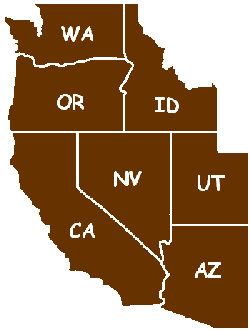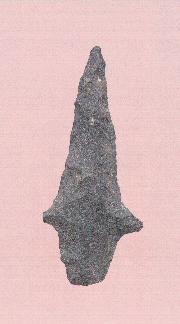|

From the early 1990's through about 2015, Northwest Research Obsidian Studies Laboratory (NWROSL) was engaged in an active program of FGV (fine-grained volcanic rocks including basalt) source identification and trace element characterization studies in the Tahoe and Lassen national forest regions of California and later widened source coverage to include a limited number of other selected sources in Oregon, Nevada, Utah, Idaho, Arizona, Washington, Colorado, and British Columbia. Much of the FGV research that is described here is the result of the FGV source and artifact provenance studies carried out during that period. For more information about the FGV sources and characterization methods in general, see the links above. NWROSL also suspended any further basalt and FGV characterization studies in Hawaii, southern Arizona, and any other locations not covered in our current FGV and basalt source catalog. Either these studies have not proven to be particularly productive (as in the Phoenix Basin or in southern California), or, as in the case of Hawaii, a local facility (University of Hawaii at Hilo) has developed the necessary resources for local basalt characterization studies. Several of the maps shown here are somewhat out of date (missing newly-added FGV sources) and we hope to update them in the near future.
We use the term FGV - fine-grained volcanic material - to encompass a variety of different volcanic or igneous rocks that are used for the manufacture of prehistoric stone tools. These rock types most often include basalts, andesites, rhyolites, and dacites. However, the classification of volcanic rocks is not a straightforward exercise and is done using a combination of chemical and textural or petrographic attributes. In short, it's simply not possible to reliably determine the correct rock type for volcanic materials using only visual or trace element characteristics. A dark, fine-grained rock, for example, might be basalt, rhyolite, dacite, shale (a metamorphosed sedimentary rock), or it might be something completely different. Because of this, we've adopted the FGV term in order to simply sidestep the need for accurate classification terminology. For more basic information about the often-confusing topic of rock classification schemes, take at look at the Wikipedia entry for igneous rocks.
Fortunately, for all practical purposes in trace element provenence studies of FGV's, it doesn't matter if the material being tested is a basalt, an andesite, a rhyolite, or is some other type of volcanic rock. The key characteristics are that the the lithic material being tested is fine-grained, has no large phenocrysts or inclusions that can't be avoided by the X-ray beam (these are a different composition than the fine-grained matrix in which they occur), and is volcanic in origin. Geochemical sources must also be relatively homogeneous in their trace element composition and must also be chemically distinguishable from other regionally-available FGV sources (something that must be determined pragmatically through the geochemical analysis of multiple samples from potential sources).
|
